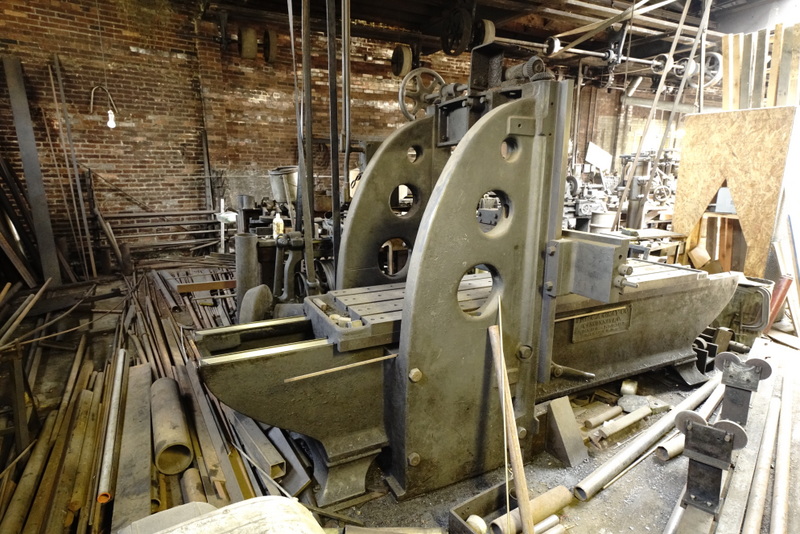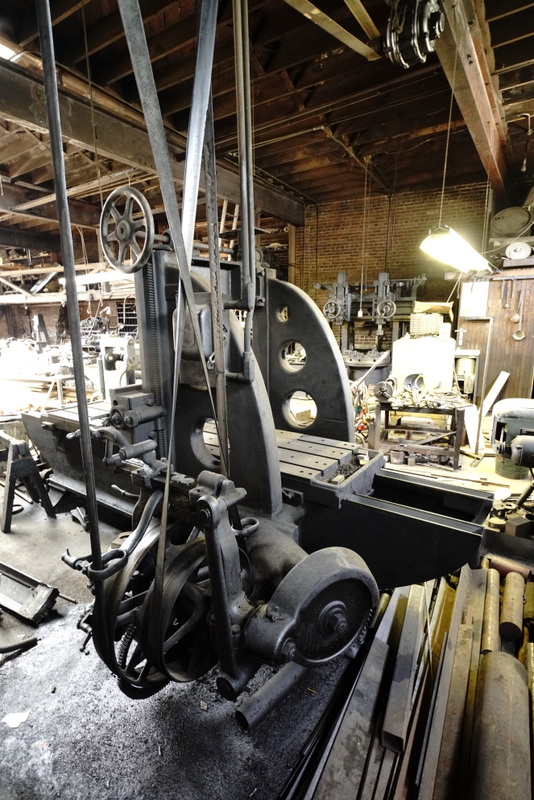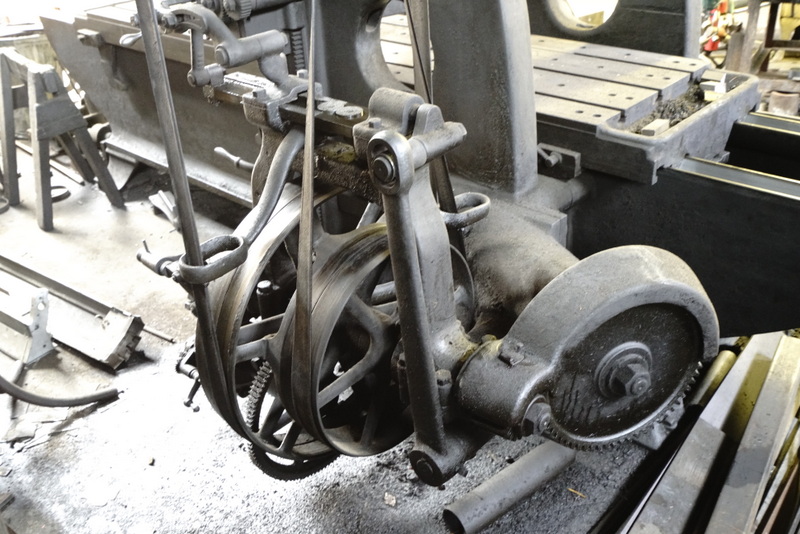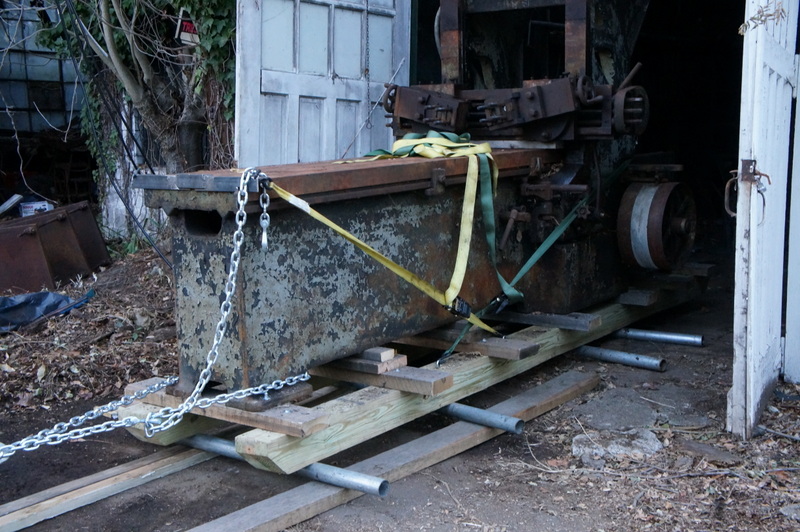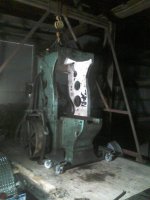lienjohn
Aluminum
- Joined
- Dec 8, 2007
- Location
- Buckingham, VA
Hi Folks, I bought the Gray planer a couple of weeks ago. When I said I was picking it up, that is all I want to do at this visit. Pick it up and set it on skates and roll it a couple of feet back and forth. I'd rather work out how to do this in a separate trip than figure it out with the rollback truck idling.
Advice wanted:
Weight. I'm thinking 16,000 lbs max. The Gray planer weight somebody posted in the 1915 machine shop thread was 12,000 lbs for a 6 foot by 30 inch. This one is 8 feet by 24 inch. I don't know, maybe 16,000 is an over estimate. What do y'all think?
Lift points. There is a 3x2 inch hole that goes through the two columns. I'm guessing I can put a steel bar through that and lift that end with two jacks. I think I will protect the casting with a chunk of HDPE plastic so it isn't steel on cast iron. Opinions?
The plan is to put it on skates. One under each column and a steerable skate at the front. Also, strap the skates to the machine with equipment straps and 4x4s and whatever so that they don't come off, especially when it gets winched up onto the rollback truck.
Lastly, I don't want to remove the drive mechanism. It's weighty, but relative to the rest of the machine, maybe not. Can I do it in one piece?
Any advice or criticism is welcome. I don't want to screw up this move.
I have two pics I want to upload, one with the holes in the columns and a general shot of the planer emphasizing the drive works. But I am not able to right now. I'll try later.
Many thanks.
John
Advice wanted:
Weight. I'm thinking 16,000 lbs max. The Gray planer weight somebody posted in the 1915 machine shop thread was 12,000 lbs for a 6 foot by 30 inch. This one is 8 feet by 24 inch. I don't know, maybe 16,000 is an over estimate. What do y'all think?
Lift points. There is a 3x2 inch hole that goes through the two columns. I'm guessing I can put a steel bar through that and lift that end with two jacks. I think I will protect the casting with a chunk of HDPE plastic so it isn't steel on cast iron. Opinions?
The plan is to put it on skates. One under each column and a steerable skate at the front. Also, strap the skates to the machine with equipment straps and 4x4s and whatever so that they don't come off, especially when it gets winched up onto the rollback truck.
Lastly, I don't want to remove the drive mechanism. It's weighty, but relative to the rest of the machine, maybe not. Can I do it in one piece?
Any advice or criticism is welcome. I don't want to screw up this move.
I have two pics I want to upload, one with the holes in the columns and a general shot of the planer emphasizing the drive works. But I am not able to right now. I'll try later.
Many thanks.
John







